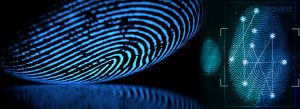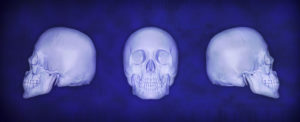National Institute of Justice and the Virginia Department of Forensic Science Date July 2024 Overview The Virginia Department of Forensic Science (DFS) developed two novel analytical methods using liquid chromatography tandem mass spectrometry (LC-MS/MS) to improve efficiency, detection, and productivity…
Category: NIJ Success Stories
Success Story: NIJ and The New York City OCME Validating Confirmatory Body Fluid Identification Assays for Real-World Impact
National Institute of Justice and The New York City OCME Date December 2023 Overview Support from the National Institute of Justice (NIJ) enabled the New York City OCME to develop and validate proteomic mass spectrometry body fluid assays to support…
Success Story: LatentSleuth: A Case Study on the Impact of Federal R&D Funding
National Institute of Justice and the Latent Print Research Community Date December 2021 Overview The development of technologies to improve the objective collection, analysis, and interpretation of evidence is driven by the multiple stakeholders that make up the forensic science…
Success Story: Advancing Mixture Interpretation Analysis with NOCIt
National Institute of Justice and Rutgers University Date September 2020 Overview DNA samples recovered from crime scenes often contain at least two contributors. Complex forensic DNA mixture interpretation can be challenging and requires computational advancements that support its use. Using…
Success Story: Advancing 3D Imaging for Footwear and Tire Impressions
National Institute of Justice and Purdue University Date May 2020 Overview Shoeprints and tire tracks are common types of impression evidence found at crime scenes. When a shoe or tire impacts a deformable substrate like soil or snow, it can…
Success Story: Revolutionizing Laboratory Efficiency Assessments Through Project FORESIGHT
National Institute of Justice and West Virginia University Date March 2020 Overview Crime laboratories are expected to provide consistent and high quality services across multiple domains to criminal justice stakeholders, even though these laboratories may have limited resources and constrained budgets.…
Success Story: Enabling Forensic Field Testing with Paper Microfluidic Devices
National Institute of Justice and Florida International University Date April 2019 Overview Forensic investigators, law enforcement, and military personnel are often placed in potentially dangerous situations when they come across suspected drugs, explosives, and bodily fluids while in the field.…
Success Story: Improving DNA Mixture Interpretation with the Help of Machine Learning
National Institute of Justice and Syracuse University Date March 2019 Overview When DNA is recovered from a crime scene, victim, or suspect, it may be a mixture of genetic information from multiple individuals. To successfully interpret a mixture of DNA,…
Success Story: Advancing 3D Virtual Microscopy for Firearm Forensics
National Institute of Justice and Cadre Forensics Date March 2019 Overview Examining bullets and cartridge cases from crime scenes can help link crimes, moving investigators one step closer to identifying a suspect. Firearm forensic analysis can also link recovered evidence…
Success Story: Uncovering Key Details of Skeletal Remains through 3D-ID Software
National Institute of Justice and North Carolina State University Date January 2019 Overview When forensic anthropologists investigate unidentified remains, they look for important clues that can help identify the subject. For example, the size and shape of the skull can…










